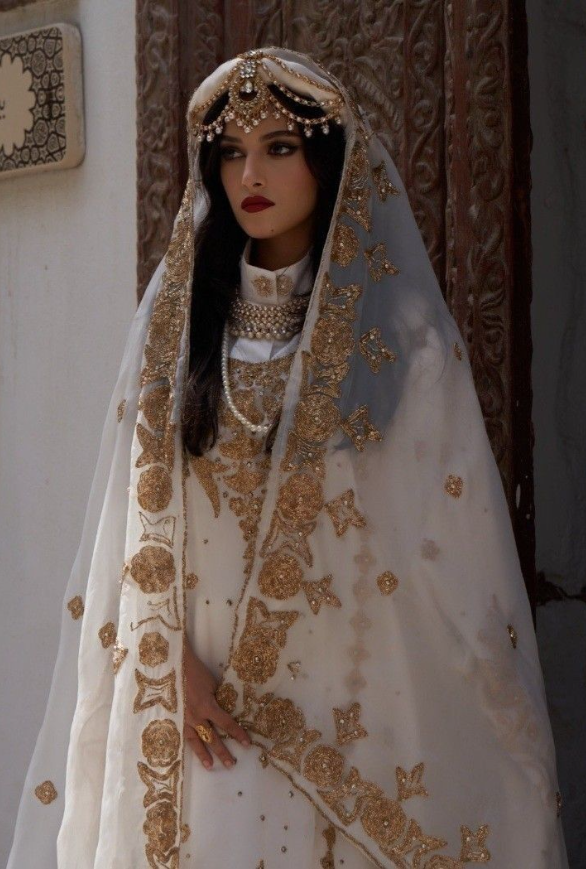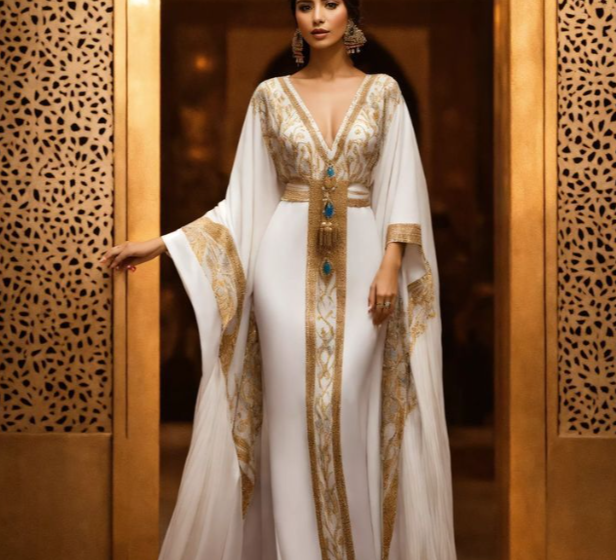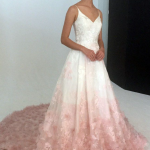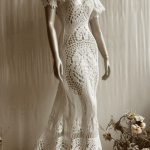When discussing wedding fashion infused with cultural richness and heritage, a traditional Egyptian wedding dress immediately springs to mind. Egypt, with its centuries-old traditions and vibrant cultural tapestry, has fostered unique styles that reflect both regional diversity and a long historical background. Below is a comprehensive look at the essence of the Egyptian wedding gown, the symbols it represents, and how modern interpretations carry on these timeless customs.
The Importance of a Traditional Egyptian Wedding Dress
A bride’s wedding attire in Egypt goes far beyond aesthetics; it embodies centuries of cultural history, family pride, and sometimes religious considerations. Patterns, fabrics, and decorative elements are chosen not only for their beauty but also for the rich symbolism they convey. Each design choice can reflect a specific region or family tradition, bridging past and present in a celebratory garment.
Historical Roots of Egyptian Bridal Fashion
Ancient Influences and Local Traditions
Traces of Egypt’s wedding attire date back to Pharaonic times, when linen and fine textiles were reserved for significant events. Although historical records are scarce, it is known that early Egyptian brides sometimes wore brightly colored dresses or clothes with ornamental details. Over time, these influences merged with Islamic fashion and various external cultural inputs to form the looks we recognize today.
From Rural to Cosmopolitan
Throughout different eras, Egyptian weddings have displayed contrasts between rural simplicity and urban opulence. In rural communities, simpler, sturdy fabrics prevailed, while city brides might choose imported silks, intricate embroidery, or advanced tailoring techniques influenced by trade routes and foreign designers. This fusion is still visible in modern Egyptian bridal wear, which effortlessly melds local and global inspiration.
Defining Features of a Traditional Egyptian Wedding Dress
Fabrics and Materials
- Silk and Satin
Used for their luxurious sheen and drape, often highlighting the dress’s silhouette. - Lace and Organza
Valued for sophisticated detailing and layering, frequently incorporated into sleeves or bodices. - Linen-Cotton Blends
More common in hotter regions or among brides seeking breathable, lightweight attire.
Color Palette and Symbolism
Although white dresses have become predominant due to global trends, some Egyptian brides opt for creams, golds, or pastel hues, aligning with local preferences or family traditions. Gold embroidery or decorative threading can symbolize prosperity and blessings for the newlyweds’ future.

Modesty and Religious Influences
In some traditions, the bride’s attire is governed by modesty standards, especially if the family observes conservative Islamic rules. This can be reflected in high necklines, long sleeves, or a fitted hijab carefully matched to the gown. However, many modern Egyptian brides seamlessly blend modest features with trendy cuts and silhouette details.
Modern Twists on Traditional Egyptian Wedding Attire
Bridging Classic and Contemporary
Today’s Egyptian bridal fashion offers a spectrum from purely traditional gowns with heavy embroidery to sleek Western-influenced dresses featuring subtle nods to heritage. Designers often experiment with modern silhouettes like mermaid or A-line gowns but add recognizable Egyptian touches—such as gold beading or stylized motifs reminiscent of ancient designs.
Celebrity and Designer Impact
Egypt’s thriving fashion scene and globally recognized Egyptian designers have influenced how local brides approach wedding wear. High-profile figures sometimes showcase unique interpretations of the country’s heritage, marrying time-honored craftsmanship with international trends. These new takes prove especially popular for city weddings, reflecting modern tastes without forsaking cultural identity.
Cultural Significance in Egyptian Weddings
Family and Tradition
Egyptian weddings celebrate not just the couple’s union but also a deeper connection between families and their shared history. The bride’s dress can represent alignment with this tradition, from clan or village references to region-specific colors or embroidery patterns. Extended relatives may offer input on the design, ensuring it resonates with collective heritage.
Religious and Ceremonial Elements
A marriage in Egypt can involve both civil and religious components. For some families, the bride’s dress might align more closely with certain spiritual norms—like ensuring modest silhouettes and coverage. Others might embrace more global influences, mixing customary pieces such as a long cape or embroidered shawl with a contemporary bridal gown.
Steps to Selecting a Traditional Egyptian Wedding Dress
- Research Your Heritage
Understand the region or cultural background your family represents. Each area in Egypt may showcase distinct motifs or weaving methods. - Collaborate with Local Designers
Look for bridal boutiques or designers who specialize in Egyptian wedding attire. They often maintain an archive of historical patterns and can create a custom piece. - Choose an Appropriate Fabric
If the wedding is held during warmer months (common in Egypt), breathable and light materials are crucial. - Decide on Ornamentation
Delicate gold or silver thread embroidery, beading, or lace detailing can evoke the regal aura associated with Egyptian heritage. - Ensure Comfort and Fit
A perfect fit is essential, particularly given the intricate designs and layering. Make sure you can move freely for the often-lively festivities.
Frequent Mistakes or Overlooks
- Too Many Modern Elements: Overloading a dress with contemporary Western features may overshadow its Egyptian roots.
- Ignoring Climate Conditions: Heavy fabrics are common in luxurious designs but can be uncomfortable in high heat.
- Skipping Family Consultation: Elders in Egyptian families often have valuable input or preferences to ensure the attire adheres to longstanding traditions.
Frequently Asked Questions (FAQ)
Q: Does a traditional Egyptian wedding dress always have to be white?
A: Not necessarily. White has become standard due to global bridal fashion trends, but historically, Egyptian brides have worn creams, golds, or other hues symbolizing prosperity and tradition.
Q: Are there differences between rural and urban wedding dress styles in Egypt?
A: Yes. Rural dresses might lean toward simpler cuts and more breathable materials, while urban dresses often reflect modern silhouettes and more ornate embroidery.
Q: How can a bride incorporate modesty if her family follows Islamic customs?
A: Many choose higher necklines, longer sleeves, or a matching hijab that complements the gown, proving that modesty can seamlessly blend with style and tradition.
Q: What if my family has ties to multiple cultures?
A: Brides frequently merge various cultural elements, using one tradition as a base and adding details from the other. It can create a refreshingly unique gown.
Q: Can the design incorporate references to ancient Egyptian motifs?
A: Absolutely. Hieroglyph-inspired embroidery, papyrus-themed patterns, or subtle references to Egyptian mythology can bring a distinctive flair to the dress.
Conclusion
A traditional Egyptian wedding dress is far more than fabric and stitching; it’s a reflection of history, culture, and the bride’s personal narrative. Whether the choice is for an authentically regal look reminiscent of centuries-old rituals or for a modern hybrid style that balances heritage and current fashion, Egyptian wedding attire remains a captivating testament to the country’s deep cultural roots. With the right resources, careful planning, and a nod to tradition, any bride can step onto the wedding stage embodying both the legacy of her ancestors and her unique modern identity.



